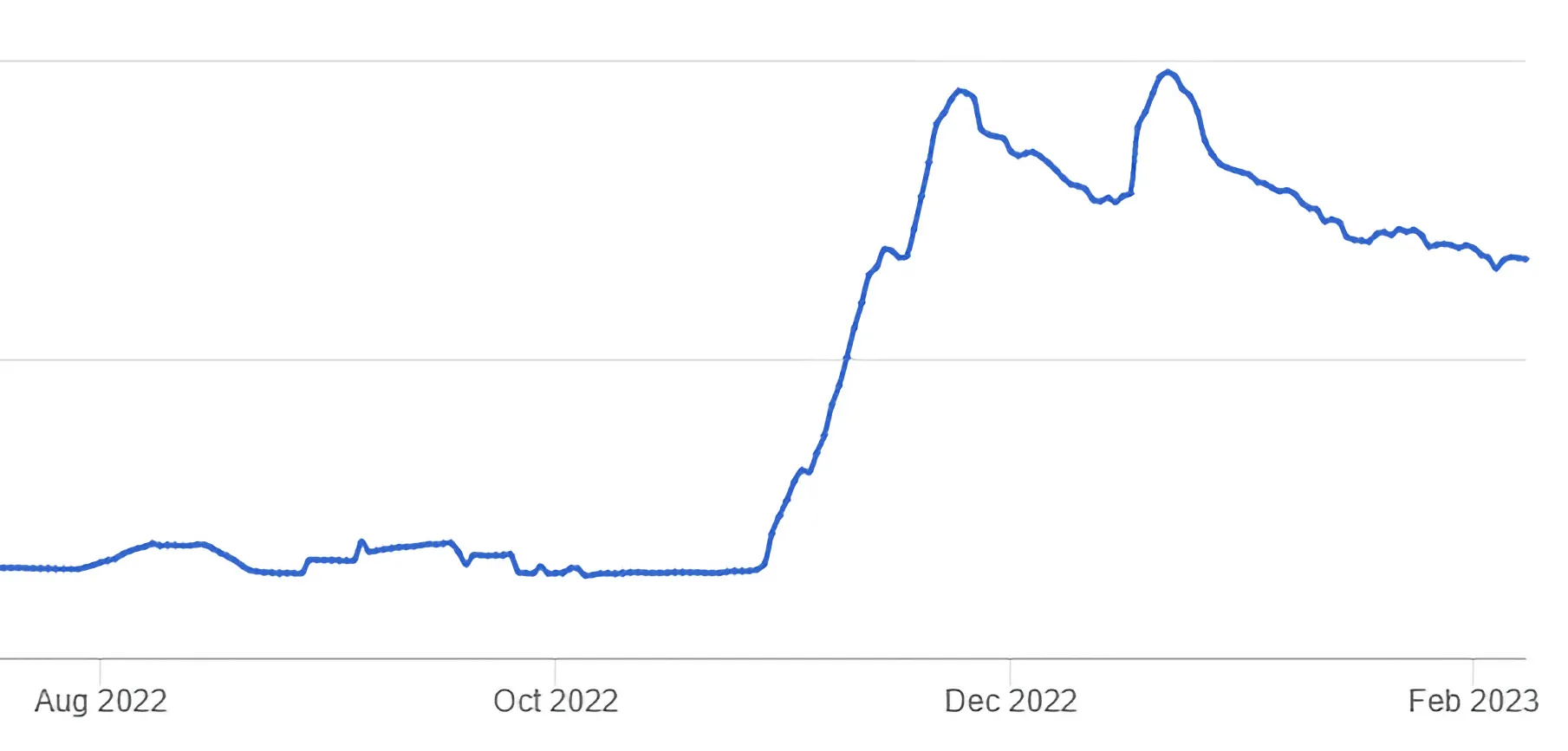Friday Five: misreporting Mastodon, dangerous deepfakes and tanking Twitter
Is Mastodon really tanking? Who’s making a mint from newsletters? And who are these eerie newsreaders spouting propaganda? Your weekend reading, sorted.

Happy Friday, good people. Here’s your Friday Five stories to read and think about as you wind-down towards the weekend or, based on last weeks’ stats, over the weekend itself.
Before we get to the links, I have a small announcement to make. Those of you who get the email version of this post and who immediately click through to the site will already be aware of this: but I’ve revamped and redesigned it. If you want to know why and how, well, all the answers you need are here.
I hope you like the new-look OM&HB as much as I do.
Let’s dive in:
Is Mastodon tanking?
Sure looks like it:

But, wait, what if we extend that back into the past a bit?

Well, that tells a rather different story, doesn’t it?
And, as Mike Masnick points out for Techdirt, this is the sort of narrative that a couple of journalists are guilty of building:
Any site getting a big influx of users is going to have some number of them choose not to engage, especially something that’s new and different. But if you look at the actual retention rate for the fediverse, it’s astoundingly high. Looking at sites that track actual usage of the fediverse, we see that it went up quite a lot in November and December, and while it’s dipped in January, it’s still way above where it was pre-Musk takeover.
It’s also worth noting that the fediverse is bigger than just Mastodon. (If you have no idea what that last sentence means, it’s worth reading Glen Fleishman’s explainer.)
So, yes, the numbers have dropped from the peak, but they are still well above where they were pre-Musk — and the evolution of new apps is making Mastodon ever easier to use. How many of those lapsed users will check back in a couple of months down the line — and like what they see?

Don’t trust the AI. The AI lies.
Futurism is defining a great niche for itself in highlighting shitty uses of AI by publishers. For example, they asked Bradley Anawalt, the chief of medicine at the University of Washington Medical Center, to review an AI-generated article published by Mens Journal on the issue of low testosterone:
Anawalt pointed to 18 specific errors he identified in the article. Some were flagrantly wrong about basic medical topics, like equating low blood testosterone with hypogonadism, a more expansive medical term. Others claimed sweeping links between diet, testosterone levels, and psychological symptoms that Anawalt says just aren't supported by data.
Oops. Look, folks, if the tech isn’t ready, you need to make damn sure your fact checking is. And if it takes you longer to fact-check it than it would take to write it from scratch — the tech just ain’t ready yet.

The News Anchors who don’t exist
We’ve stopped talking about it as much, but “fake news” — online misinformation and disinformation — hasn’t gone away. And it’s expanding rapidly into video, generated using deepfakes:
The two broadcasters, purportedly anchors for a news outlet called Wolf News, are not real people. They are computer-generated avatars created by artificial intelligence software. And late last year, videos of them were distributed by pro-China bot accounts on Facebook and Twitter, in the first known instance of “deepfake” video technology being used to create fictitious people as part of a state-aligned information campaign.
This is mildly terrifying: deepfake video propaganda is spreading in the wild. It’s not very good yet, but it’ll only get more realistic — and therefore harder to spot — in the months to come. Indeed, you can’t help wondering if this is just the stuff they found because it’s so poor, and that the really good stuff is still undetected.

The Substack rich list
Press Gazette has been poking into the best-paid Substack publishers:
The 27 highest-earning email newsletters on the platform Substack generate at least $22m a year in revenue, Press Gazette can reveal.
Three things:
- This would have been much more interesting as an analysis of newsletter publishers generally, including Ghost and Beehiiv. You could use Ghost Explore to start getting some back-of-the-envelope calculations done, for example.
- Letters from an American appears to be so far ahead of the pack that it’s ludicrous. It terrifies me that it’s not mapped a domain name onto the newsletter…
- I see you, Press Gazette editor-in-chief Dominic Ponsford, and your “bedroom bloggers’ allusion in the newsletter:
Using publicly available data we have found out that at least 27 Substackers are earning CEO-level salaries sending out email updates from their spare room.
2005 called, it wants its jokes back.

Elon’s got the engagement blues
Oh, this is just schadenfreude at its very best. Elon’s own engagement is tanking on Twitter, as it is for many of us. A Twitter engineer bravely tried to explain why — it’s due to diminished interest in the Musk himself — and got fired for his trouble.
But this is a look inside the dysfunctional remains of Twitter:

That's it, folks. Another week in the bag. You survived. 👏🏻











